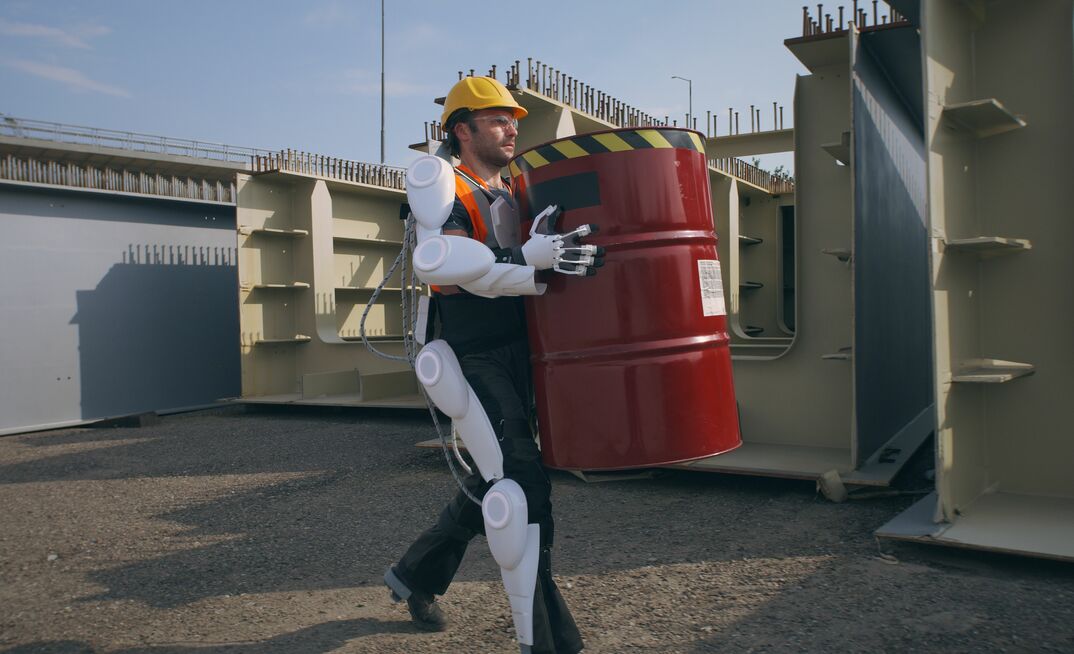Exoskeletons giving energy producers and miners superhuman strength. Collaborative robots helping them out. Sensors continously checking whether they are okay. This is the sort of future facing the energy and resources sector a recent has found.
Megetrends, a report from the Australian Resources & Energy Employment Association, forecasts technological and other workforce transition, much of which will be driven by the net-zero transition.
The report's findings were informed by a survey of 20 senior resource and energy industry leaders.
According to the report the biggest megatrends include the materials revolution, the bio-revolution and the so-called Industry 4.0, or Fourth Industrial Revolution.
YOU MIGHT ALSO LIKE
The Industry 4.0 concept was introduced to the world in 2015. It is driven by technology disruptions such as big data, analytics, cloud computing, the internet of things, wireless technologies, augmented and virtual reality, and artificial intelligence.
"Mining-related innovations of the Fourth Industrial Revolution include biomechanical exoskeletons to give miners super strength and endurance, augmented reality-enabled maintenance with detailed remote assistance, virtual reality training for high-risk scenarios, wearable sensor for measuring health and wellbeing, radio frequency identification tag systems to automate reporting of malfunctioning equipment, collaborative robots for strenuous and repetitive tasks such as loading, 5G and IoT mine networks and analytics for prediction of production-relevant events," the report says.
"The success of the Fourth Industrial Revolution ultimately hinges on the ability to integrate data with physical processes, requiring significant upskilling and restructuring of production facilities."
The uptake of AI, automation and next-generation computing, which should increase efficiency and productivity and reduce costs, is already changing the way the resources industry works.
International oil and gas companies, for example, are expected to spend up to $12 billion a year by 2030 on cloud computing and analytics.
The report warns that the sector's "cyber maturity" is relatively low.
The materials revolution will harness responsive and lightweight nanomaterials with outstanding magnetic, optical and mechanical properties for exploration and production.
Graphene is one of the materials the report singles out. It is considered the strongest yet thinnest material in the world with the highest heat and electricity conductivity of any material.
The bio-revolution, triggered in part by the COVID-19 pandemic, is expected to lead to a major upgrading of infrastructure and facilities to higher hygiene and biosafety standards.
This all means the industry will have to upskill and restructure to align to four overarching themes: growing demand for specialised technology skills; changing workforce demographics; reduced demand for low-skilled, routine and on-location jobs; and greater workforce expectations.
The Megatrends are:
- Climate change adaptation and net zero;
- Industry 4.0;
- Materials revolution;
- Bio-revolution;
- Uncertainty;
- Trust and governance; and
- Disruptive IT trends.
AREEA chief executive officer Steve Knott said these megatrends were changing the world and the future of work.
"They're driving innovation, investment and government incentives and regulation – and creating opportunities and challenges for the resources and energy industry," Knott said.
"Traditional strengths such as oil and gas will continue to play a crucial role in the energy mix. However, only the right planning, capability and resourcing will ensure the sector remains robust and profitable moving forward."
























